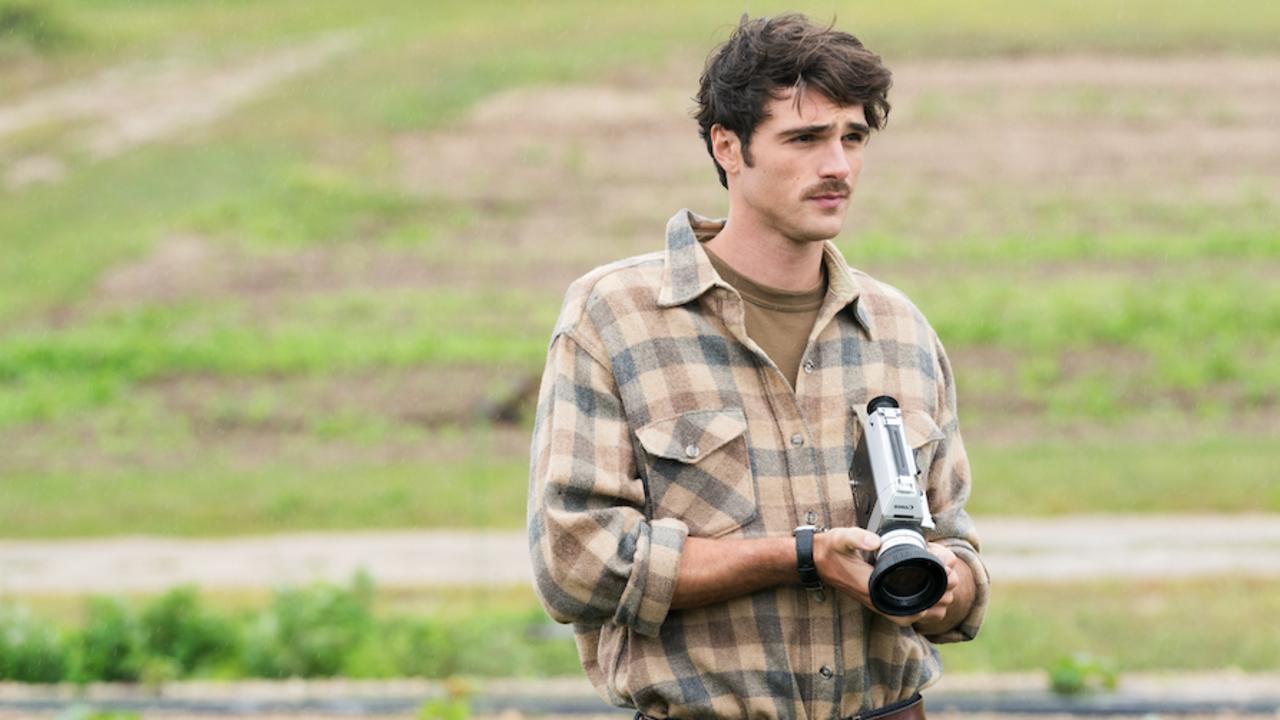Good Grace: the real life of Grace Kelly
GRACE Kelly’s extraordinary life was a fairytale to everyone but her.

BY way of conducting an unofficial survey recently, I asked the 20-something nurse extracting blood from my arm if she’d ever heard of Grace Kelly.
Yes, a couple of years ago, the Bendigo Art Gallery imported the Victoria and Albert Museum’s exhibition of some of her most famous costumes. But that doesn’t mean everybody was paying attention. And since Kelly made her last appearance in a film almost 60 years ago and died in 1982, there might be some who failed to see her passing by. The nurse, however, was not one of them.
She even went on to explain that, according to the Golden Ratio, a measure of female and male beauty based on the Fibonacci Numbers ratio, Kelly had “one of the most desirable faces of all time”. It had been mathematically proven. The nurse added that she’d also seen a couple of her films and was looking forward to Grace of Monaco. The film, starring Nicole Kidman, deals with Kelly’s post-Hollywood life, and opened the Cannes Film Festival this month.
Pressing on, I asked my survey subject how many films she thought Kelly might have been in. “Maybe 50 or so?” she replied, shocked to learn that the fame the actress has acquired over the years had grown from the base of only 11. Kelly began her career in the theatre, but most of her work was done for television in the early 1950s, during an era which came to be known as TV’s first Golden Age. Since dramas went live to air then and recording methods were primitive, few were preserved for posterity. Her work on the silver screen is now all we have left of her career.
Equally surprising is that for only one of those 11 films, The Swan (1956), does she receive top billing. She was 10th on the credit list for her debut, a small role made up of four short scenes in Henry Hathaway’s workmanlike man-on-a-ledge thriller Fourteen Hours (1951). She rose to fifth for her first big role, as Gary Cooper’s wife in Fred Zinnemann’s classic community-in-crisis western, High Noon (1952). Then to third for John Ford’s lacklustre Mogambo (1953), about which she reportedly confided to a Hollywood columnist: “It had three things that interested me: Ford, Clark Gable and a trip to Africa with all expenses paid. If it had been made in Arizona, I wouldn’t have done it.”
From that point onwards, though, she never dropped beneath second billing. Hers was clearly seen to be a star on the rise. In 1954, she turned down Eva Marie Saint’s role in On the Waterfront to make Rear Window, the second of three films she made with Alfred Hitchcock. Saint took home an Oscar for the part, although Kelly deservedly won one of her own a year later for her performance in George Seaton’s solid ensemble drama The Country Girl. And her wonderful, flighty farewell performance as Tracy Lord in High Society (1956), Charles Walter’s winning musical adaptation of Philip Barry’s The Philadelphia Story even has her affectionately mimicking Katharine Hepburn, who played the equivalent role in George Cukor’s 1940 film version of the play.
Kelly left the US in 1956 to marry Prince Rainier III of Monaco, farewelled by a Warner Pathe News bulletin that anticipated “the world’s biggest wedding in the world’s smallest state” and a happy ending for “the lovely maiden and the lonely prince”. There were no more films, but Kelly’s star never lost its lustre.
The reasons for her ongoing fame probably have less to do with the work she did as an actress than with the workings of the celebrity machine. Were she able to offer testimony on the matter, Kelly would probably agree. Interviewed by Pierre Salinger for American TV a few months before her death, she dismisses — and perhaps underestimates — her career with a disarming frankness: “I don’t think I was accomplished enough as an actor to be remembered for that particularly,” she tells him.
Certainly, between the time “the world” first noticed her and her death, the news and gossip media worked hand-in-hand to cast her in a variety of roles: first, as a Hollywood ingenue and then as a rebel, when she refused to heed the bidding of her masters there; occasionally as a serious actress; regularly as a fashion plate; breathlessly as a fairytale princess; latterly, as the mother of party-girl daughters; and, finally, as yet another shining star who died prematurely.
I don’t believe it’s possible to extract from all of this any more than the vaguest outlines of a profile. Numerous biographies propose behind-the-scenes glimpses of her life, ranging from Donald M. Spoto’s reverential Princess Grace of Monaco to Wendy Leigh’s trashy True Grace: The Life and Times of an American Princess, but none seems especially insightful.
Gossip magazines have long exploited her fame for their own ends, contriving a love life for her that would have left the poor woman little time for anything else. Affairs have been alleged with most of her co-stars — Cooper, Gable, Ray Milland, William Holden, Bing Crosby, Frank Sinatra — and sundry others, including Marlon Brando, David Niven and Tony Curtis, as well as a host of lesser known supporting players in her life.
Over the years, collaborators and critics have ventured their impressions in more respectable and respectful ways. Lauded costume designer Edith Head wrote that she “personified femininity” and was “the perfect subject for my designs”. Critic-turned-filmmaker Peter Bogdanovich crowned her “the ultimate Hitchcock blonde”. For his part, Hitchcock spoke of her as “a snow-covered volcano” and a woman of estimable “sexual elegance”. Cary Grant, her co-star in Hitchcock’s To Catch a Thief (1955), refers to her “serenity”.
Delivering the eulogy at her funeral in Monaco in 1982, James Stewart remembered her as “just about the nicest lady that I ever met”. Then there is the impression of Kelly that has been filtered through her screen persona. While nobody should ever, of course, confuse the actress with the characters she played, they are connected in obvious ways. When Stewart’s wheelchair-bound man-with-a-camera in Rear Window (1954) deploys words such as “beautiful”, “talented” and “sophisticated” to describe her character, a New York uptown girl, he could equally be talking about Kelly. And when Sinatra croons Cole Porter’s You’re Sensational by way of making a pass at her in High Society — “I don’t care if you’re called the fair Miss Frigidaire, ’cause you’re sensational” — he could just as easily have being addressing the song to Kelly as to the character she’s playing.
In fact, there’s often the suggestion of a canny overlap between the two. Known for her refusal to surrender to corporate demands about her career — “The idea of being owned by a studio was offensive to me,” she said later — she was often cast as independently minded and strong willed. Those qualities are in evidence in the deliciously forthright repartee that is at odds with her iceberg demeanour in Rear Window and To Catch a Thief, and in the stand her set-upon heroines take against the patriarchal forces gathering around her in The Country Girl, The Bridges at Toko-Ri, Mark Robson’s unexpectedly uncompromising Korean War drama, and the otherwise entirely unrewarding Green Fire (both 1954).
But nowhere is this hint of overlap more in evidence than in her penultimate film, The Swan (1956), Charles Vidor’s lavish, hugely undervalued and now all-but-forgotten adaptation of Ferenc Molnar’s 1920 play. Seen today, it becomes a cautionary tale about the dangers of being a celebrity, of being frozen in time by the public gaze. And it gains a special poignancy from the fact that it would have been impossible for Kelly to have been unaware of its implications for her own life.
At the time it was being made, she was being courted by Prince Rainier, whom she’d met when she went to the Cannes Film Festival in 1955 and to whom she would be engaged by the time she was shooting her final film, High Society. In it, the ring given an ostentatious close-up is, in fact, the one she had received from her real-life prince.
In Vidor’s film, Kelly plays Princess Alexandra (a role she’d also played six years earlier in a production for the TV series Actors Studio). The princess’s mother (Jesse Royce Landis) is pushing her to marry her cousin, the Crown Prince Albert (Alec Guinness). Alexandra, however, prefers the attentions of a commoner, her fencing tutor (Louis Jourdan). The choice she has to make is between the responsibilities of a life in the public eye and the freedom to melt into the crowd.
The warning signs of what lies ahead for both character and actress loom large in the analogy that the film’s imagery draws between her and the swans in the lake on her family’s estate and that Prince Albert makes explicit. “Think what it means to be a swan,” he tells her, “To lie like a dream on the smooth surface of the lake and never go on the shore. On dry land, where ordinary people walk, the swan is awkward, even ridiculous ... So there she must stay, out on the lake. Silent, white, majestic. Be a bird but never fly; know one song, but never sing it, until the moment of her death. And so it must be for you, Alexandra: head high, cool indifference to the staring crowds along the bank. And the song: never.”
Princess Alexandra makes her choice, as did Kelly soon afterwards, Monaco providing the backdrop for what Hitchcock later described as “the best performance of her life”. Kelly, however, wasn’t living her life inside a fiction: it was real, she wasn’t acting and there were no happy-ever-after endings.
That she understood this only too well is clear when she tells biographer Spoto: “The idea of my life as a fairytale is itself a fairytale.”
Grace of Monaco opens on June 5.


